15 years one-stop China custom CNC machining parts factory
 110 |
Published by VMT at Apr 18 2025 | Reading Time:About 10 minutes
110 |
Published by VMT at Apr 18 2025 | Reading Time:About 10 minutes
When it comes to creating custom metal parts, manufacturers face the challenge of selecting the best process to meet the specific demands of their projects. The process of metal parts manufacturing is not only technical but requires an in-depth understanding of material properties and available technologies. Whether you're producing parts for aerospace, automotive, or electronics, the precision and quality of the parts must be at the forefront. In this article, we will explore the most common metal parts processing techniques, including CNC machining, extrusion, stamping, and others, to guide you through the options and help you make the right choice for your project.
The key to successful custom metal parts manufacturing lies in choosing the right process. CNC machining services, such as CNC turning and CNC milling, offer precise, repeatable results, while processes like extrusion, forging, and casting bring unique advantages for certain applications. This guide will provide you with the knowledge to make informed decisions about the most suitable approach for your needs.
Let’s dive deeper into the various methods of metal parts manufacturing and how each of them can be leveraged to meet your specific requirements.
Metal manufacturing refers to the processes used to create parts and products from metal. These processes involve shaping, cutting, forming, and assembling metal into usable components. The techniques used for metal parts processing vary based on factors such as the material type, complexity of the part, and volume of production. From CNC machining to casting, each process has its strengths and is suited to particular applications.
Understanding metal manufacturing is essential to making informed decisions, especially when considering processes like CNC prototype processing, which is ideal for creating prototypes and small batches of custom parts. Whether you're looking for precise, high-performance parts or cost-effective solutions for mass production, choosing the right technique will make all the difference.

When it comes to metal parts manufacturing, the selection of the right material is one of the most crucial steps. The type of metal chosen will influence the performance, durability, cost, and ease of processing of the final product. Understanding the various metal materials available and their unique properties is essential in determining the best material for your specific application. In this section, we will take a look at some of the most common metal materials used in the manufacturing of custom parts, namely carbide and soft metals, and explain their respective benefits and limitations.
Carbide
Carbide is a highly durable material that is commonly used in industries that require precision and resistance to wear. It is a composite of carbon and metal (usually tungsten), and its exceptional hardness makes it ideal for high-performance applications. Carbide is widely used in cutting tools, industrial machinery, and other high-stress components.
Properties of Carbide:
Applications of Carbide:
Carbide is ideal for applications where extreme hardness, wear resistance, and performance are paramount. However, due to its cost and brittleness, it may not be suitable for every application, especially in cases where cost-effectiveness or flexibility is a priority.
Soft Metals
Soft metals, such as aluminum, copper, and brass, are widely used in metal parts manufacturing due to their ease of processing and versatility. These metals are less dense and easier to shape compared to harder materials like carbide and steel, which makes them ideal for a range of industries.
Properties of Soft Metals:
Applications of Soft Metals:
Soft metals are ideal for manufacturing parts that need to be lightweight, durable, and easy to shape. Their versatility and cost-effectiveness make them popular choices for industries such as aerospace, automotive, electronics, and construction. However, compared to harder materials like carbide or steel, soft metals may not be suitable for high-stress or high-temperature applications.
Conclusion
The choice of metal material is fundamental to the success of any metal parts manufacturing project. Carbide materials are best suited for high-performance, high-wear applications that demand exceptional hardness and temperature resistance. On the other hand, soft metals like aluminum, copper, and brass offer versatility, ease of processing, and excellent corrosion resistance, making them ideal for a wide range of industries. Understanding the properties of each material and selecting the right one for your project can ensure both the performance and cost-effectiveness of your final product.
Creating custom metal parts may seem complex, but with the right approach and tools, it becomes an efficient and precise process. In today’s manufacturing world, there are multiple methods used to transform raw metal into high-quality components. The most common and effective method is CNC machining, a subtractive process where material is removed from a workpiece to achieve the desired shape. Whether you need a one-off prototype or high-volume production, modern metal parts manufacturing offers flexible solutions to meet diverse industry requirements. In this section, we’ll explore how CNC machining forms the backbone of metal parts processing, breaking down its technologies and techniques.
CNC Machining: Removing Material

CNC machining is a precise and automated method of fabricating metal parts by removing material from a solid block using computer-controlled tools. It stands for Computer Numerical Control and enables high repeatability, tight tolerances, and complex geometries. This process is widely adopted across industries such as aerospace, automotive, medical, and electronics due to its reliability and versatility.
CNC machining starts with a digital 3D CAD model of the part, which is then converted into a set of instructions (G-code) that guide the machine to perform operations like cutting, drilling, and shaping. This subtractive process ensures high precision and minimal material waste, making it a preferred choice for CNC prototype processing and full-scale CNC machining services.
Unlike manual machining, CNC machining is highly consistent and scalable. Once a design is finalized, it can be reproduced across thousands of parts with the same specifications. Moreover, CNC machines are compatible with a wide range of materials—including aluminum, stainless steel, brass, and titanium—making them suitable for nearly every metal parts manufacturing need.
CNC machining is a manufacturing process where pre-programmed computer software dictates the movement of machinery and tools. This allows for the automated shaping, drilling, and milling of metal workpieces. The technology supports a variety of operations, such as cutting slots, forming threads, and even engraving surfaces, all with pinpoint accuracy.
The real advantage of CNC machining lies in its versatility. Whether it’s CNC turning, CNC milling, or multi-axis machining, this method allows manufacturers to create parts that are too complex or precise for manual fabrication. In addition, CNC machines can operate 24/7 with minimal human supervision, significantly reducing production time and labor costs.
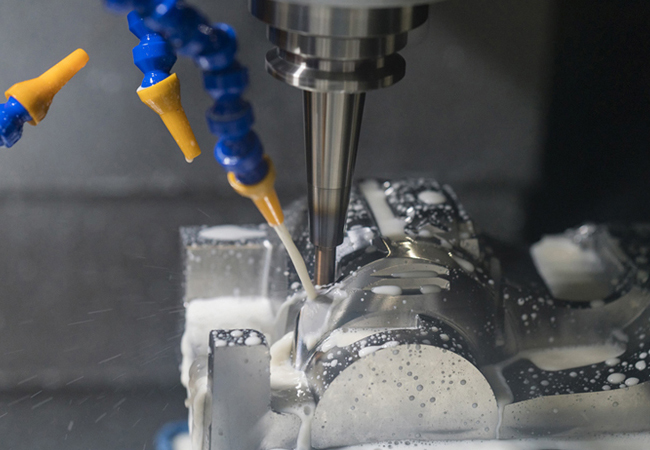
Key benefits of CNC machining include:
This makes CNC machining the foundation of modern metal parts processing, from functional prototypes to end-use components.
2 CNC Machining Technologies: CNC Turning and CNC Milling
CNC machining includes several methods, but the two most commonly used technologies are CNC turning and CNC milling. Each method has its own strengths and is suitable for different types of parts and geometries.
CNC Turning
This process involves rotating the workpiece while a stationary cutting tool removes material. It’s ideal for producing cylindrical parts like shafts, pins, bushings, and threaded components. CNC turning delivers excellent surface finishes and tight tolerances.
CNC Milling
In CNC milling, the workpiece remains stationary while rotating cutting tools move along multiple axes to remove material. It is ideal for producing flat surfaces, slots, holes, and complex 3D shapes. Milling is highly flexible and can produce everything from prototypes to final parts with intricate geometries.
Both processes are integral to CNC machining services and are often used together in multi-process workflows to achieve the desired shape and functionality.
What is CNC Milling?
CNC milling is a subtractive manufacturing process where rotary cutters are used to remove material from a stationary metal workpiece. Controlled by computer programs, the machine moves cutting tools along multiple axes (commonly X, Y, and Z), allowing for the creation of parts with complex geometries, precise dimensions, and smooth surface finishes.
CNC milling is ideal for creating components with flat surfaces, contours, slots, holes, and pockets. It is widely used in producing engine blocks, housings, brackets, molds, and even intricate parts for aerospace and electronics. Multi-axis milling machines (3-axis, 4-axis, and 5-axis) offer even greater flexibility, enabling the fabrication of parts that would otherwise require multiple setups or secondary processes.

Advantages of CNC milling include:
CNC milling is an essential part of metal parts manufacturing, especially when high complexity and tight tolerances are required.
CNC turning is a process that shapes metal parts by rotating the workpiece against a stationary cutting tool. The computer-controlled lathe accurately removes material from the outside or inside diameter of the part to produce features like grooves, threads, tapers, and shafts. This method is especially efficient for manufacturing symmetrical cylindrical parts.
In a typical CNC turning operation, the workpiece is clamped into a chuck and spun at high speed. Cutting tools then move along the X and Z axes to precisely remove material. Advanced CNC lathes can also perform operations such as drilling, tapping, and knurling, often in a single setup.
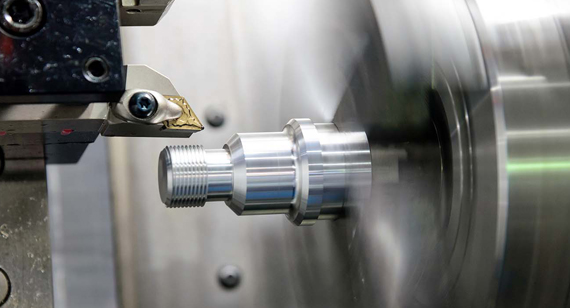
Applications of CNC turning include:
CNC turning offers quick cycle times, high productivity, and excellent surface finishes. For manufacturers seeking efficient CNC prototype processing or large-volume CNC machining services, turning remains a vital and cost-effective solution.
Choosing the right material is just as important as selecting the right machining method. In CNC machining, the properties of the material directly impact the efficiency, cost, and final performance of the part. Whether you're working on CNC prototype processing or full-scale metal parts manufacturing, understanding different materials helps ensure optimal strength, durability, and functionality of your parts. From lightweight aluminum to corrosion-resistant stainless steel, each material serves specific needs across various industries. Below is a breakdown of commonly used metals in CNC machining services, highlighting their features and applications to help you make the right choice.
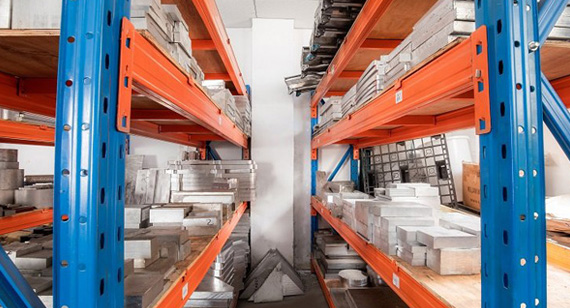
Aluminum
Aluminum is one of the most widely used materials in CNC machining due to its excellent machinability, lightweight, and resistance to corrosion. It's ideal for parts that need high strength-to-weight ratios, such as those used in aerospace, automotive, and electronic housings.
Key benefits of aluminum in CNC machining include:
Popular aluminum alloys like 6061 and 7075 offer a balance between strength, machinability, and cost, making aluminum a top choice for both metal parts processing and CNC prototype manufacturing.
Brass is a copper-zinc alloy known for its attractive appearance, excellent machinability, and low friction properties. It's frequently used for precision components such as valves, gears, bushings, and fittings in industries like plumbing, electronics, and decorative hardware.
Advantages of using brass for CNC machining:
Brass is ideal for parts requiring tight tolerances and fine details. It's often chosen for high-end consumer products and technical parts where both functionality and appearance matter.
Bronze
Bronze is a copper-based alloy that includes tin and other elements, offering excellent durability and wear resistance. It’s especially useful for parts exposed to friction, such as bearings, bushings, and marine fittings.
Key characteristics of bronze:
In CNC machining services, bronze is valued for applications in marine, industrial, and aerospace sectors, where components must endure harsh environments or frequent movement.
Copper
Copper is prized for its exceptional electrical and thermal conductivity. It’s widely used in electrical components, heat exchangers, and complex conductive parts. However, copper’s softness and tendency to gum up tools make it more challenging to machine than other metals.
Notable properties of copper:
Because of its specialized performance, copper is often used in high-precision CNC machining applications where conductivity is critical—such as in electronics, telecommunications, and energy systems.
Steel
Steel is a foundational material in metal parts manufacturing, known for its strength, versatility, and relatively low cost. Available in numerous grades (e.g., mild steel, alloy steel, tool steel), it offers a wide range of mechanical properties that suit many structural and functional applications.
Advantages of steel:
Steel is commonly used in automotive, construction, machinery, and industrial equipment, where strength and reliability are essential. It remains a staple in CNC machining services due to its adaptability.
Stainless steel combines strength with corrosion resistance, making it ideal for medical, food-grade, marine, and chemical processing applications. It is harder to machine than mild steel, but offers unmatched durability and longevity.
Key advantages:
Common grades like 304 and 316 are frequently used in CNC prototype processing and commercial production, especially where hygiene, temperature resistance, or appearance are concerns.
Titanium is a high-performance metal used in aerospace, medical, and high-end automotive industries due to its exceptional strength-to-weight ratio and corrosion resistance. However, it’s also one of the more difficult metals to machine.
Key properties of titanium:
Despite its machining challenges, titanium's benefits make it an essential material for mission-critical components in industries where performance matters most.
Zinc Alloy
Zinc alloys offer a cost-effective solution for precision parts that require dimensional stability, corrosion resistance, and ease of casting or machining. They are commonly used for die-cast parts, enclosures, and hardware components.
Benefits of zinc alloys:
Zinc alloys are widely used in electronics, consumer products, and small mechanical parts. They are especially beneficial in CNC machining for small-to-medium production runs where cost and speed are critical.
Applications of CNC Machining Metal Parts
CNC machining is not just a manufacturing method—it’s a critical driver behind innovation across industries. Thanks to its high precision, repeatability, and versatility, CNC machining plays a pivotal role in metal parts manufacturing, from prototypes to mass production. Whether for creating complex geometries in aerospace components or fabricating durable automotive parts, CNC machining services offer unparalleled consistency and efficiency. As technology advances, the scope of CNC prototype processing continues to expand, enabling faster development cycles and reduced production errors. The following sections will explore how CNC machining—through both turning and milling—supports key industries and the specific components commonly produced.
Applications of CNC Turning
CNC turning is widely used in industries that require high-volume production of symmetrical metal parts. This subtractive process spins the workpiece while a cutting tool removes material to achieve the desired shape. Known for speed and precision, CNC turning is ideal for producing cylindrical or conical shapes such as shafts, rods, and bushings. It's especially suitable for metal parts processing where dimensional accuracy and tight tolerances are critical. Below are some of the main industries and parts that rely on CNC turning.
In the automotive industry, CNC turning is essential for producing drivetrain and suspension components. These include shafts, axles, steering parts, and engine components, all of which demand high durability and precision. CNC turning enables manufacturers to produce these parts efficiently while maintaining tight quality control, which is crucial for safety and performance in vehicles.
Telecommunications
CNC turning is heavily utilized in telecommunications to produce connectors, housings, and small metallic interfaces. These components require consistent quality and high-frequency repeatability, both of which CNC turning delivers. Materials like brass, copper, and aluminum are commonly used to ensure strong electrical performance and signal integrity.
Electrical
The electrical sector depends on CNC turning for components such as terminals, fasteners, and electrical housings. These parts need to meet exact specifications to ensure conductivity and durability. CNC turning enables the production of intricate components with high tolerance, essential for high-voltage or high-speed applications.
Mechanical
Mechanical systems require rotating components like shafts, spindles, and bushings. CNC turning provides the speed and precision to manufacture these parts in a cost-effective manner. It also allows for complex threading, grooving, and tapering, making it an essential technology for general mechanical assemblies.
Precision-turned parts are also common in the electronics industry, where miniaturized metal components like pins, sockets, and heat sinks are required. CNC turning enables rapid, reliable production of these parts using conductive materials such as copper and aluminum, ensuring both function and thermal performance.
Common Parts Produced by CNC Turning
Applications of CNC Milling
While turning is ideal for rotational components, CNC milling excels at creating flat surfaces, intricate contours, and multi-angled geometries. In this process, rotating cutting tools remove material from a fixed workpiece, allowing for greater design flexibility. This makes milling perfect for CNC prototype processing and detailed metal parts manufacturing, especially when multiple faces of the part require machining. Below are several key industries that benefit from CNC milling.
Aerospace
The aerospace industry requires high-precision components made from durable, lightweight materials. CNC milling is used to manufacture parts like brackets, ribs, structural panels, and housings. With its ability to meet tight tolerances and complex shapes, CNC milling ensures that critical flight parts meet safety and performance standards.
Automotive Models
CNC milling is instrumental in both production and design stages of automotive development. From milling molds for car body prototypes to producing precision components like intake manifolds and throttle bodies, the process supports high-performance outcomes. CNC machining services also help manufacturers iterate quickly during R&D, improving speed to market.
Medical devices demand high accuracy and biocompatible materials—two areas where CNC milling excels. It’s used to machine surgical instruments, implants, housings for diagnostic equipment, and more. Because CNC machining allows for tight dimensional control, it's ideal for producing intricate components that require both performance and safety compliance.
Electronics benefit from CNC milling in the form of heat sinks, connector housings, circuit board frames, and structural enclosures. These parts often require precise hole placements, cavities, and mounting interfaces, all of which are made efficiently with CNC milling. The ability to machine aluminum and copper materials makes it easier to optimize thermal and electrical performance.
What Is Extrusion in Metal Parts Manufacturing?
When it comes to producing long, uniform, and complex cross-sectional profiles, traditional metal parts processing methods often fall short—leading to inefficiencies, material waste, and limitations in design flexibility. That’s where extrusion steps in. This process allows manufacturers to shape metals and plastics by forcing them through a custom-designed die, forming continuous lengths of product with exact specifications. If your project demands precision, consistency, and material efficiency, understanding how extrusion works could transform your approach to metal parts manufacturing.
Extrusion is a manufacturing process where material is pushed or drawn through a shaped die to create long components with consistent cross-sections. It is widely used for producing complex profiles in metals and plastics, offering high accuracy, minimal waste, and cost-effective scalability.
Now that we’ve defined extrusion and its importance in custom metal parts manufacturing, let’s explore the different types of extrusion techniques. Each type has its own advantages and ideal use cases, depending on factors like material type, temperature tolerance, and part design. Understanding these processes will help you choose the most effective extrusion method for your project.
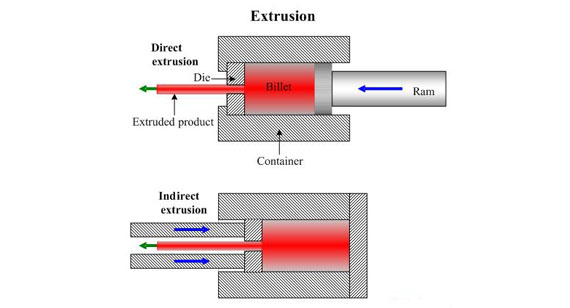
3 Types of Extrusion Operations
Hot Extrusion
Hot extrusion involves heating the material above its recrystallization temperature before it's pushed through the die. This reduces resistance, making it easier to form complex shapes. Hot extrusion is ideal for metals like aluminum, copper, and magnesium alloys. It’s widely used in the automotive, construction, and aerospace industries, where strength and malleability are essential. The heated material flows more uniformly, reducing stress and improving surface finish—ideal for creating components like tubing, structural beams, and railings.
Cold Extrusion
Unlike hot extrusion, cold extrusion is performed at room temperature or slightly above. It offers tighter dimensional tolerances and a better surface finish while increasing the strength of the part through strain hardening. This process is commonly used for CNC machining parts that require high strength-to-weight ratios, such as fasteners, gear blanks, and connectors. Cold extrusion is energy-efficient and results in minimal oxidation or scale, making it an excellent choice for high-volume production runs with strict tolerances.
Friction Extrusion
Friction extrusion is a relatively new and innovative process that uses frictional heat generated between a rotating die and the billet to soften the material before extrusion. This technique allows for the processing of hard-to-extrude or recycled materials, such as metal chips from CNC machining services. It’s gaining popularity in sustainable manufacturing due to its ability to repurpose waste material into functional parts, particularly in industries prioritizing environmental responsibility.
Choosing the right material for extrusion is essential to ensure performance, durability, and manufacturability. Both plastics and metals can be extruded, and the choice depends on the application’s thermal, mechanical, and environmental demands. Below is an overview of common materials used in the extrusion process, each offering unique benefits for specific metal parts processing projects.
Plastics
Plastics like PVC, ABS, polyethylene, and polycarbonate are commonly extruded for use in piping systems, insulation, window frames, and cable sheathing. Plastic extrusion allows for high-speed, high-volume production of lightweight, corrosion-resistant components. It’s an economical option for consumer products, construction, and electrical applications. Because plastics soften easily, they are extruded at relatively low temperatures, making the process energy-efficient.
Metals
Metals used in extrusion include aluminum, copper, brass, steel, and magnesium. Aluminum extrusion is especially popular due to the metal’s lightweight, strength, and corrosion resistance. It’s used extensively in metal parts manufacturing for aerospace structures, heat sinks, automotive trims, and architectural frameworks. Steel and copper are also extruded for applications that demand higher mechanical strength or conductivity. The extrusion of metals often involves either hot or cold methods, depending on the hardness and final application of the component.
Applications and Use Cases of Extruded Metal Parts
Extruded metal parts play a vital role across a wide spectrum of industries, where consistent cross-sectional profiles and structural reliability are non-negotiable. Whether it's in aerospace, electronics, or construction, extrusion allows for the economical production of complex parts with high mechanical strength and precision. Thanks to its ability to create lightweight and durable components, extrusion has become a preferred method in metal parts manufacturing, especially when combined with processes like CNC machining for further customization and fine detailing. This synergy makes it ideal for both standard production and CNC prototype processing in demanding industries.
Aerospace
The aerospace sector demands lightweight components that don’t compromise on strength or resistance to extreme environmental conditions. Aluminum extrusions are frequently used in the manufacture of structural aircraft elements, such as fuselage frames, seat tracks, and wing components. These extruded parts can be further processed through CNC machining services to add precision features and mounting points. The ability to maintain tight tolerances while keeping weight low is critical in aerospace applications, and extrusion meets these needs with cost efficiency and consistency.
Automotive manufacturers utilize extruded metal parts for both structural and decorative components. Bumpers, roof rails, chassis reinforcements, and trim are often produced through extrusion. The process provides excellent strength-to-weight ratios, improving vehicle performance and fuel efficiency. Extruded profiles are also ideal for electric vehicles (EVs), where aluminum housings and frames need to be both lightweight and durable. These parts are often refined using CNC machining to meet the specific tolerances required for safety and fitment.
In the electronics industry, heat dissipation and housing design are crucial. Extruded aluminum heat sinks are widely used in power supplies, amplifiers, LED lighting, and computer processors due to their excellent thermal conductivity and lightweight design. Extrusion allows for the creation of complex fin structures that maximize surface area. When combined with CNC machining, these parts can be customized with mounting holes and cable channels, enhancing their usability across diverse electronic applications.
Industrial
Industrial machinery and infrastructure rely on extruded metal parts for structural support, frames, and component housing. Their uniformity, mechanical strength, and ability to be produced in long lengths make them a staple in assembly lines and machining factory environments. Structural extrusions are often enhanced with CNC machining processes to fit specific operational needs, such as sensor mounts, brackets, and rail systems. Their corrosion resistance and durability ensure long service life even in harsh manufacturing conditions.
Applicable Parts
Windows
Aluminum window frames are one of the most common extruded products in the construction industry. The extrusion process allows for intricate profiles that hold glass panels securely while offering insulation and weatherproofing. These parts are often anodized or painted for durability and aesthetic appeal.
Railings
Extruded metal railings are used in staircases, balconies, and public infrastructure. Their lightweight and uniform design ensures safety and ease of installation. CNC finishing processes help in achieving the required fit, decorative patterns, or mounting configurations.
Floorings
Aluminum floor panels and non-slip surfaces used in factories, public transport, and walkways are typically produced via extrusion. These parts offer excellent load-bearing capacity while maintaining corrosion resistance and ease of maintenance.
Casings
Extruded metal casings are essential for protecting sensitive electronic equipment and mechanical parts. Their strength, precision, and ability to dissipate heat make them ideal for use in telecommunications, computers, and control panels. Post-processing with CNC machining ensures compatibility with connectors, screens, and interfaces.
Stamping: Cutting and Bending Parts – A Complete Guide
What Is Stamping?
When customers need high-volume metal parts with precise shapes and features, traditional machining methods may not offer the speed or cost-efficiency they require.
Delays in production, inconsistent quality, or high manufacturing costs can hurt your bottom line.
Metal stamping offers a fast, consistent, and economical way to produce complex parts at scale.
Stamping is a manufacturing process that uses dies and high-tonnage presses to transform flat sheet metal into desired shapes. This process combines cutting, bending, and forming actions to create high-precision parts used across various industries. It's ideal for large-volume production, especially when consistency, repeatability, and low unit cost are priorities.
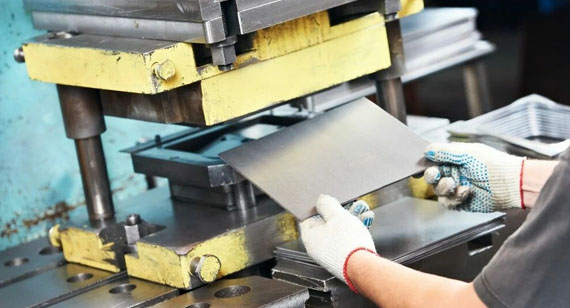
Stamping Techniques
Punching
Punching removes material from the sheet using a punch and die set. It creates holes or cutouts in specific shapes and is often the first step in a multi-stage stamping process.
Bending
Bending deforms a metal sheet along a straight axis without cutting. It gives shape and structural integrity to the part and is commonly used in chassis, brackets, and enclosures.
Embossing
Embossing raises or depresses patterns on the surface of the metal. This is used for decorative or functional purposes—such as logos, labels, or grip patterns.
Imprinting
Imprinting applies surface details using a patterned die. It is often used for marking part numbers, serial codes, or textures on the metal surface.
Flanging
Flanging creates flared or curled edges on sheet metal. This is crucial for assembling parts, improving edge strength, or joining components.
Each of these techniques can be used independently or combined in a progressive die system for seamless automation and high-speed production.
Sheet Metal Materials Used in Stamping
Aluminum
Lightweight and corrosion-resistant, aluminum is ideal for stamped parts in aerospace, automotive, and electronics applications. Its excellent formability makes it a top choice for complex stamping designs.
Copper
Copper offers superior electrical conductivity, making it perfect for stamped components in electronics and electrical systems. It's also relatively soft and easy to form.
Steel
Steel (including carbon steel and stainless steel) is one of the most commonly used stamping materials due to its strength and durability. Stainless steel, in particular, is favored in stainless steel CNC machining and CNC prototype machining for its corrosion resistance.
Other Materials
Other sheet metals such as brass, titanium, or nickel alloys may be used for specialized applications depending on performance needs like heat resistance, conductivity, or aesthetics.
Applications of Stamped Metal Parts
Electronics
Stamped components like connectors, terminals, and shielding cases are integral to smartphones, computers, and circuit boards.
Home Appliances
Washing machines, microwaves, and refrigerators use stamped housings, panels, and brackets for both function and design appeal.
Automobiles
From body panels to engine mounts, stamping delivers cost-effective and durable parts at the scale needed by the automotive industry.
Aerospace
Precision, lightweight, and high-strength stamped parts are critical in aircraft interior structures, brackets, and enclosures.
Industrial Equipment
Heavy-duty stamped parts are widely used in construction machinery, robotics, and industrial control systems, often integrated with CNC machining services for tight tolerances.
Conclusion
Stamping is a powerful solution when it comes to high-volume, high-precision metal part production. Whether you're in aerospace, automotive, or consumer electronics, the right stamping process—combined with expert design and material selection—can significantly boost efficiency and product quality.
At VMT CNC machining factory, we offer custom stamping and CNC machining services under one roof. Need high-precision stamped parts fast? Contact us today for a free consultation or prototype quote.
When metal parts need to be extremely strong, durable, and reliable, traditional manufacturing methods like casting or machining may not always meet performance demands.
Parts may crack under pressure, wear out too soon, or fail in extreme environments.
Forging offers unmatched structural integrity and mechanical strength, making it the go-to solution for high-stress, high-performance applications.
Forging is a manufacturing process that shapes metal using localized compressive forces, typically delivered through hammers or presses. Unlike casting or cutting, forging aligns the internal grain structure of the metal, resulting in parts that are significantly tougher, more fatigue-resistant, and longer lasting.
Whether it’s a precision aerospace component or a heavy-duty automotive crankshaft, forging ensures the performance and reliability that critical industries demand.

5 Key Steps in the Forging Process
1. Heating
The forging process begins with heating the raw metal—often billets or ingots—to a specific temperature, usually between 1,000–2,200°F (depending on the material). The goal is to soften the metal enough to allow it to deform without cracking.
There are three types of forging based on temperature:
Each method affects the metal’s final properties and is selected based on the application.
2. Forming
In this stage, the heated metal is positioned into a die or mold, and shaped using mechanical force. Forming can involve simple or complex dies depending on the part geometry.
This is the step where the metal begins to take its rough form, preparing it for more precise shaping. For high-volume manufacturing, automated forging systems are often used for speed and consistency.
3. Forging (Deformation)
Now comes the critical step: actual forging. Using powerful hammering or pressing, the metal is compressed and reshaped into its final geometry. This force not only molds the shape but also refines the metal’s grain structure, enhancing its mechanical properties.
Types of forging include:
4. Cooling
After forming, the forged metal must be cooled at a controlled rate. This cooling phase is critical to achieve the desired hardness, toughness, or ductility. Improper cooling can lead to internal stress, warping, or cracking.
In some cases, components are immediately heat-treated (tempered or quenched) after forging to further improve material performance.
5. Finishing
The final step involves removing any excess material (also called flash), surface treatment, and machining. Some forged parts require secondary processes like CNC machining to meet tight tolerances or to create holes, threads, or other features.
Finishing ensures that the forged product meets exact specifications and is ready for use in its intended application.
Why Choose Forging for Your Project?
Forging Materials: Choosing the Right Metal for Your Needs
The right material choice can be the difference between a long-lasting, reliable part and one that fails under pressure.
With so many metals to choose from, selecting the ideal material for forging can be overwhelming, especially when you need to ensure strength, durability, and cost-efficiency.
Understanding the properties and benefits of various forging materials can help you make the best choice for your application, ensuring optimal performance and reduced risks.
Forging is a versatile process that can accommodate a wide range of metals, each with unique characteristics. The material chosen for forging affects the final product's strength, weight, resistance to wear, and ability to withstand harsh conditions.
In this article, we’ll explore some of the most commonly used metals in forging, including aluminum, bronze, and other metals, to help you make an informed decision for your next project.
Aluminum
Aluminum is one of the most popular forging materials due to its lightweight nature, corrosion resistance, and excellent machinability. When forged, aluminum parts exhibit improved strength and durability compared to cast aluminum parts. It is widely used in industries such as aerospace, automotive, and electronics.
Key Benefits of Forged Aluminum:
Aluminum forgings are commonly used for aircraft components, engine parts, and automotive wheels, where both strength and weight savings are critical.
Bronze
Bronze, an alloy primarily composed of copper and tin, is another widely used material in forging. Known for its superior wear resistance, strength, and corrosion resistance, bronze is ideal for parts that need to endure friction or exposure to corrosive environments.
Key Benefits of Forged Bronze:
Bronze is a popular choice in the marine, mining, and automotive industries, where its resistance to corrosion and wear is essential for longevity.
Other Metals Used in Forging
While aluminum and bronze are two of the most commonly used metals, many other materials can be forged to suit specific needs. These include:
Steel
Steel is one of the most widely forged materials due to its strength, hardness, and versatility. Different types of steel, including carbon steel, stainless steel, and alloy steels, are forged for various applications. Steel forgings are used in automotive parts, heavy machinery, industrial equipment, and aerospace components.
Titanium
Titanium offers high strength-to-weight ratio and excellent corrosion resistance, making it ideal for demanding aerospace and medical applications. While more expensive, titanium forgings are used where performance outweighs cost concerns.
Nickel Alloys
Nickel-based alloys are forged for extreme environments that require high-temperature resistance and corrosion protection. Common in aerospace engines and chemical processing, nickel alloys offer exceptional durability under heat and stress.
Copper
Copper forgings are often used for electrical components and heat exchangers, thanks to its excellent conductivity and thermal properties. It is commonly forged in the electrical, HVAC, and electronics industries.
Applications of Forged Metal Parts: From Surgery to Aerospace
Problem: When you need a part that offers exceptional strength, durability, and performance, it's crucial to choose the right manufacturing process.
Agitation: Many traditional methods such as casting or machining might not deliver the strength needed for high-stress, safety-critical applications.
Solution: Forged metal parts offer unparalleled strength, resilience, and performance, making them the go-to solution for industries where reliability is paramount.
Forging is an essential process in manufacturing parts that must withstand high levels of stress, friction, and wear. Whether it’s a medical tool, an aircraft component, or an automobile axle, forged metal parts provide superior strength and fatigue resistance that is critical for high-performance applications.
In this article, we’ll explore the various applications of forged metal parts, covering industries from surgical instruments to aerospace, and highlight the specific parts that benefit from the forging process.
Applications of Forged Metal Parts
Surgical Instruments
Forged metal is often used in surgical instruments such as scalpels, forceps, and scissors. The forging process ensures that these tools are strong, durable, and precise, which is critical in medical applications where performance and reliability are paramount.
Electrical Transmission
Forged components play a vital role in electrical transmission equipment, such as connectors and bus bars. The forging process enhances the material’s conductivity and durability, ensuring a long-lasting, reliable performance in electrical systems.
Household Hardware
Forged parts are widely used in household hardware, including door handles, hinges, and locks. Their strength and resistance to wear ensure these everyday items maintain their functionality over time, even under constant use.
Industrial Equipment
In the industrial sector, forged parts such as gears, shafts, and valves are essential. The forging process imparts the strength required to endure high loads and pressure, making these parts suitable for machines used in mining, construction, and other heavy-duty industries.
Electronics
Forged metal parts are used in electronics for components like connectors and heat sinks. The forging process ensures these parts can handle high temperatures and provide excellent electrical conductivity, contributing to the efficiency and longevity of electronic devices.
Automobiles
The automotive industry relies heavily on forged parts such as crankshafts, connecting rods, and engine blocks. These parts require the strength and resilience that only forging can provide, making them perfect for use in high-performance vehicles and safety-critical applications.
Aerospace
Aerospace components are subject to extreme stress and temperatures, which is why forged parts are crucial. Items like turbine blades, landing gear components, and brackets undergo forging to ensure they can withstand the demanding conditions of flight.
Applicable Forged Parts
Wheel Spindle
The wheel spindle is a critical part of the vehicle's suspension system, supporting the weight of the vehicle and facilitating steering. Forged spindles are preferred because they offer superior strength, durability, and resistance to fatigue, which is essential for the vehicle’s safety and performance.
Kingpin
The kingpin connects the steering mechanism to the wheel assembly in many vehicles, especially in trucks and buses. A forged kingpin ensures durability under high-stress loads and the ability to maintain precision in steering, even in challenging road conditions.
Axle
Axles are key to transmitting power from the engine to the wheels and bearing the vehicle's weight. Forged axles provide superior strength, reducing the risk of breakage or wear under heavy loads, making them ideal for use in both automotive and industrial applications.
Torsion Ball
A torsion ball is used in suspension systems to absorb shocks and stresses. Forging this part ensures it has the necessary strength and resilience to perform reliably, making it crucial for automotive and heavy machinery applications.
Conclusion
Forged metal parts are integral to a wide variety of industries due to their exceptional strength, durability, and ability to withstand extreme stress. From surgical instruments to aerospace components, forged parts provide the reliability that safety-critical applications demand.
At VMT CNC machining factory, we specialize in creating high-quality forged parts that meet the precise demands of each industry. Whether you need components for automobiles, industrial equipment, or electrical systems, our forging expertise ensures your parts will perform at the highest level.
Contact us today to discuss your forging needs and get a custom solution tailored to your requirements.
Problem: When creating complex metal parts, traditional methods like machining or forging may not always offer the precision or versatility needed.
Agitation: You might face challenges like high production costs or long lead times when attempting to produce parts with intricate geometries.
Solution: Casting is a tried-and-true manufacturing process that allows for complex shapes, quick production, and cost-efficiency—especially when precision and consistency are required.
Casting is a process in which molten metal is poured into a mold and allowed to cool and solidify into a desired shape. This age-old technique is still one of the most versatile and cost-effective methods for creating high-precision parts. From intricate aerospace components to durable automotive engine blocks, casting is used to produce everything from simple to highly complex parts with ease.

2 Common Casting Methods
Investment Casting
Investment casting, often referred to as lost-wax casting, is one of the most precise methods for creating detailed, intricate metal parts. In this process, a pattern of the part is first created using a material like wax or plastic. The pattern is then coated with a ceramic shell, which is heated to remove the pattern and harden the shell. Once the shell is formed, molten metal is poured into the mold, and the part takes shape.
Benefits of Investment Casting:
Investment casting is often used in aerospace, medical devices, and jewelry, where precision and surface quality are paramount.
Die casting involves injecting molten metal into a steel mold (or die) under high pressure. The metal is forced into the mold, which rapidly cools and solidifies. Once cooled, the mold is opened, and the part is ejected. This method is highly efficient and capable of producing parts at a fast rate with consistent results.
Benefits of Die Casting:
Die casting is widely used in the automotive, electronics, and consumer goods industries, where both high volumes and quality are required.
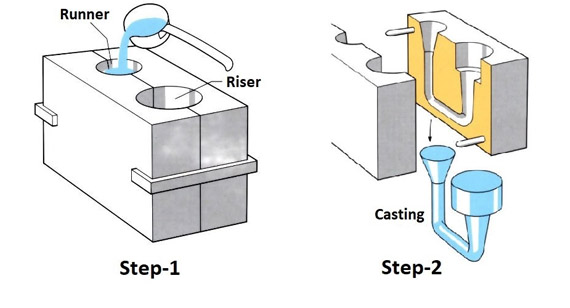
Metal Casting Materials: Choosing the Right Material for Your Project
Problem: Selecting the appropriate material for casting is critical to achieving the desired balance of strength, durability, and cost-efficiency.
Agitation: With so many metals to choose from, it can be challenging to know which one best suits your specific needs, whether for high-performance or mass production.
Solution: Understanding the characteristics of various casting materials can help you choose the right one to optimize performance, durability, and cost-effectiveness for your applications.
Metal casting involves pouring molten metal into a mold to create a desired shape. The material chosen for casting plays a vital role in determining the final product’s properties, including its strength, weight, and resistance to corrosion. In this article, we’ll explore some of the most commonly used metals in casting, including aluminum, magnesium, copper alloys, zinc, steel, and others, to help you make an informed decision for your next project.
Aluminum
Aluminum is one of the most widely used metals in casting due to its excellent lightweight properties, corrosion resistance, and ease of machining. Aluminum castings are ideal for industries where weight reduction is a priority without sacrificing strength or durability.
Benefits of Aluminum Casting:
Aluminum is frequently used for engine blocks, automotive wheels, and aerospace components, where both strength and reduced weight are essential.
Magnesium
Magnesium is the lightest of all structural metals, making it an excellent choice for industries that prioritize reducing weight, such as automotive and aerospace. Despite being light, magnesium is also highly durable and can withstand high temperatures, making it ideal for specific high-performance applications.
Benefits of Magnesium Casting:
Magnesium casting is commonly used in aircraft parts, automotive engine components, and portable equipment.
Copper Alloys
Copper alloys, such as bronze and brass, are known for their excellent corrosion resistance, electrical conductivity, and strength. These alloys are often used in applications where durability and resistance to wear are essential.
Benefits of Copper Alloy Casting:
Copper alloys are often cast for use in electrical connectors, marine components, and industrial machinery.
Zinc
Zinc is commonly used for casting parts that require high precision, complex shapes, and good corrosion resistance. Zinc die casting is a popular process due to its cost-effectiveness and ability to produce parts quickly.
Benefits of Zinc Casting:
Zinc casting is often used in household products, automotive components, and consumer electronics.
Steel
Steel is one of the most common materials for casting due to its strength, durability, and versatility. Steel castings can be used in industries that require parts to withstand high stress, pressure, and wear.
Benefits of Steel Casting:
Steel is commonly used in engine components, construction machinery, and heavy industrial equipment.
Other Metals
In addition to the metals discussed above, other materials like nickel alloys, titanium, and cast iron are also used in casting, depending on the specific application and performance requirements.
Applications of Cast Metal Parts: Versatile Solutions for Multiple Industries
Problem: In today’s fast-paced manufacturing world, producing high-quality, durable components for various industries requires reliable and cost-effective methods.
Agitation: Choosing the right manufacturing process can be challenging, especially when balancing cost, durability, and performance requirements.
Solution: Casting offers a versatile and efficient solution for producing parts that meet high standards of strength, precision, and functionality.
Cast metal parts are used across a wide range of industries, offering unique benefits such as cost-effectiveness, the ability to create complex geometries, and the versatility to handle high-performance applications. From household appliances to critical automotive and industrial components, cast metal parts provide durable, reliable solutions that perform under pressure. In this article, we explore the diverse applications of cast metal parts in industries like washing machines, metal pipes, automotive, electronics, and general industry.
Applications of Cast Metal Parts
Manufacturing Washing Machines
In home appliances, particularly washing machines, cast metal parts play a critical role in ensuring durability and functionality. Cast iron and aluminum are commonly used for components like washing drum housings, pumps, and motors. These cast parts provide the strength and longevity necessary to withstand the repetitive motion, weight, and moisture exposure that washing machines experience throughout their lifespan.
Metal Pipes
Metal pipes are essential in various infrastructure projects, ranging from plumbing systems to industrial machinery. Cast metals like cast iron and steel are ideal for making pipes that need to withstand high pressures, corrosion, and extreme temperatures. Cast pipes are used in systems for water distribution, sewage, gas pipelines, and industrial fluid transport, where their strength and resistance to wear make them invaluable.
Automotive Parts
The automotive industry relies heavily on cast metal parts for manufacturing a wide range of components, from engine blocks to transmission housings. Aluminum castings are especially popular due to their lightweight properties, which help improve fuel efficiency without sacrificing strength. Cast iron is also used for critical components like brake rotors, cylinder heads, and crankshafts, where durability and resistance to high-stress conditions are required.
Electronics
Electronics manufacturers often use cast metal parts in the production of components such as heat sinks, connectors, and enclosures. Aluminum is commonly used in this industry due to its excellent thermal conductivity and ability to dissipate heat efficiently. Cast parts in electronics help protect sensitive internal components, ensure product longevity, and provide excellent protection against external environmental factors such as dust and moisture.
Industry
In the industrial sector, cast metal parts are essential in creating machinery components, tools, and equipment that must withstand high levels of stress, heat, and wear. Materials like steel, bronze, and cast iron are used for gears, shafts, valves, and bearings that require strength and resilience. These parts ensure the reliability of machinery used in industries like construction, mining, and energy production, contributing to the safe and efficient operation of critical equipment.
Conclusion
Cast metal parts are crucial to the performance and reliability of products in a wide variety of industries. Whether it's in home appliances, automotive components, industrial machinery, or electronic devices, casting offers a flexible, cost-effective way to produce durable parts with complex geometries. The versatility of casting materials, such as aluminum, steel, cast iron, and bronze, allows manufacturers to meet diverse application needs while ensuring optimal strength and performance.
At VMT CNC machining factory, we specialize in producing high-quality cast metal parts tailored to your industry’s needs. From automotive to electronics, our expertise in casting ensures that your components meet the highest standards of quality and performance.
Contact us today to discuss your casting needs and discover how we can provide the ideal solutions for your manufacturing requirements.
What is Metal Injection Molding?
Problem: In today’s competitive manufacturing landscape, producing high-precision metal parts at scale can be both challenging and costly.
Agitation: Traditional processes like casting or machining may not be ideal for parts that require high precision, intricate geometries, and fast production cycles.
Solution: Metal Injection Molding (MIM) offers a high-precision, mass production process that overcomes these challenges, making it an ideal solution for industries requiring complex, small metal parts at competitive prices.
Metal Injection Molding (MIM) is a manufacturing process that combines the versatility of plastic injection molding with the durability and strength of metal. In MIM, fine metal powders are mixed with a binder to create a feedstock, which is then injected into a mold under high pressure to form the desired part. The binder is subsequently removed, and the part is sintered at high temperatures to achieve the final metal product. This process allows for the production of small, complex parts with exceptional accuracy and surface finish, making it ideal for mass production.

Differences Between Metal Injection Molding and Die Casting
While both Metal Injection Molding (MIM) and Die Casting are used for mass-producing metal parts, the two processes have distinct differences in terms of material suitability, design flexibility, and application.
1. Process Overview:
2. Material Suitability:
3. Design Flexibility:
4. Tolerances and Surface Finish:
5. Production Volume:
Metal Injection Molding Materials
Metal Injection Molding (MIM) supports a wide range of materials, each offering different properties to suit various applications. The following are some common materials used in the MIM process:
1. Stainless Steel:
Stainless steel is one of the most commonly used materials in MIM due to its excellent corrosion resistance, strength, and versatility. It is ideal for applications that require durability and resistance to wear, such as medical devices, automotive parts, and industrial components.
2. Tungsten:
Tungsten is a high-density metal that is commonly used in MIM for applications requiring high strength and temperature resistance. It is ideal for producing parts that need to withstand extreme conditions, such as military equipment and high-performance tools.
3. Bronze:
Bronze alloys, including phosphor bronze and aluminum bronze, are often used in MIM for parts requiring low friction, high wear resistance, and corrosion resistance. These alloys are commonly used in automotive and marine applications.
4. Tool Steels:
Tool steels are known for their hardness, wear resistance, and ability to withstand high stresses. These materials are frequently used in MIM for producing cutting tools, dies, and high-performance industrial parts.
5. Other Materials:
In addition to the metals mentioned above, titanium, copper, nickel alloys, and ceramic composites are also used in the MIM process. Each of these materials is selected based on the specific performance requirements of the application, such as lightweight properties, high strength, corrosion resistance, or heat resistance.
Applications of Injection Molded Metal Parts: Precision and Versatility Across Industries
Problem: As industries evolve and consumer demands for high-performance, durable, and cost-effective parts increase, manufacturers must find ways to meet these expectations.
Agitation: Traditional manufacturing processes may not provide the flexibility, precision, or production speed needed to meet the requirements of modern industries.
Solution: Injection Molded Metal Parts (IMMP) combine the best of metal and plastic injection molding processes, allowing for high-precision, cost-effective production of complex, small parts with exceptional strength, durability, and finish.
Injection molding has long been used for plastics, but when applied to metals through Metal Injection Molding (MIM), it opens up a wide range of applications across different industries. From aerospace to household appliances, these parts are designed for high performance, intricate designs, and mass production. Let’s take a closer look at the most common applications of injection molded metal parts.
Applications of Injection Molded Metal Parts
1. Aircraft
In the aerospace industry, precision and strength are paramount. Injection molded metal parts are ideal for producing lightweight, high-strength components used in aircraft engines, structural supports, and fasteners. Stainless steel, titanium, and aluminum alloys are frequently used for parts that need to withstand extreme temperatures, high pressure, and vibration.
2. Medical Devices
Injection molded metal parts are increasingly used in the medical device industry due to their biocompatibility, precision, and durability. Parts like surgical instruments, implants, and medical fasteners require materials like stainless steel or titanium to meet the stringent standards for performance and safety.
3. Accessories
In the accessories market, particularly for fashion and luxury goods, metal injection molding allows for the creation of intricate designs and high-quality finishes. Zinc, brass, and stainless steel are commonly used to produce items such as jewelry, belt buckles, watch parts, and glasses frames, where both aesthetics and strength are required.
4. Decorations
For decorative items, metal injection molded parts offer the ability to create detailed, durable components that can be used in home décor and architectural elements. These parts are produced in a wide range of metals, including bronze, copper, and stainless steel, and are often found in decorative hardware, ornamental fixtures, and accessories for furniture.
5. Computers
In the computing industry, metal injection molded parts are used to produce high-precision, high-performance components for devices like laptops, smartphones, servers, and peripherals. Aluminum and stainless steel are commonly used for heat sinks, internal brackets, connectors, and structural elements that require strength and excellent thermal conductivity.
6. Office Supplies
Injection molded metal parts are frequently used in the office supply industry to create functional and aesthetic components. Items such as paper clips, pen tips, binding elements, and staplers require high-precision metal parts that are lightweight yet durable, typically made from steel or stainless steel.
7. Household Appliances
Household appliances benefit greatly from metal injection molded parts for both functional and structural components. Aluminum and stainless steel are commonly used to create parts for washing machines, dishwashers, microwave ovens, and refrigerators, offering high strength, corrosion resistance, and long-lasting performance.
Conclusion
Injection molded metal parts have become essential across a variety of industries, offering unmatched precision, design flexibility, and performance. Whether for the aerospace industry’s need for lightweight, high-strength components, the medical industry’s demand for durable and biocompatible materials, or the consumer market’s desire for aesthetically pleasing and functional accessories, MIM provides versatile solutions.
At VMT CNC machining factory, we specialize in the metal injection molding process, delivering high-quality, durable parts for industries ranging from aerospace to household appliances. Our expertise ensures that your parts meet the highest standards of precision, performance, and cost-efficiency.
Contact us today to learn how we can help bring your product designs to life with metal injection molded parts.
Problem: Traditional manufacturing methods often struggle to produce complex, intricate parts quickly and affordably, especially when low production volumes are required.
Agitation: For industries like aerospace, medical devices, and automotive, creating customized, high-performance parts with intricate designs can be both time-consuming and expensive using conventional methods.
Solution: Metal 3D printing offers a revolutionary solution by enabling the production of complex geometries and small batch parts with high precision, minimal waste, and quick turnaround times.
Metal 3D printing is an additive manufacturing process where metal is deposited layer by layer to build a part from a 3D model. This process allows for the creation of highly detailed, strong, and durable parts that would be difficult or impossible to achieve with traditional methods like machining, casting, or injection molding. Metal 3D printing is ideal for producing small batches of customized components, highly intricate designs, and parts with complex internal structures, all at a fraction of the time and cost typically associated with traditional production methods.
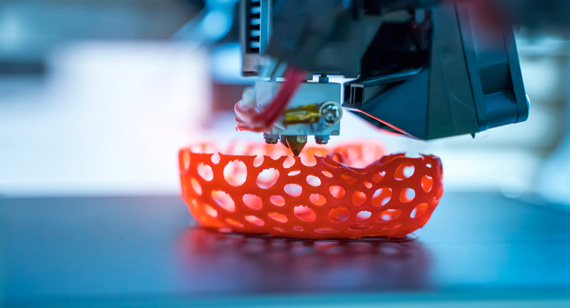
Metal 3D Printing Process
The metal 3D printing process is typically carried out using one of the following technologies:
1. Powder Bed Fusion (PBF):
In PBF, a fine metal powder is spread across the build platform. A laser or electron beam selectively melts the powder according to the 3D model, layer by layer. This method is suitable for high-precision parts and complex geometries, and is commonly used for materials like titanium, stainless steel, and Inconel.
2. Direct Energy Deposition (DED):
In DED, a metal powder or wire is fed through a nozzle, where it is melted by a focused energy source, such as a laser, and deposited onto the build surface. This method is ideal for repairing parts or adding material to existing components, and is commonly used with metals like steel and titanium.
3. Binder Jetting:
In this process, a binder is selectively deposited onto metal powder to create a part. The part is then sintered in a furnace to fuse the metal particles together. Binder jetting is often used for producing large-scale parts in industries like aerospace and automotive.
Metal 3D Printing Materials
The choice of material for metal 3D printing depends on the specific application requirements, including strength, weight, corrosion resistance, and thermal properties. Here are some of the most common materials used in the metal 3D printing process:
1. Stainless Steel
Stainless steel is one of the most widely used materials for metal 3D printing due to its excellent corrosion resistance, strength, and versatility. It is often used in aerospace, automotive, and medical applications.
2. Titanium
Titanium is a highly desirable material for metal 3D printing because of its lightweight, strength-to-weight ratio, and corrosion resistance, making it ideal for demanding environments. It is commonly used in industries like aerospace, medical devices, and high-performance automotive components.
3. Inconel
Inconel, a family of nickel-chromium alloys, is known for its high-temperature strength, corrosion resistance, and oxidation resistance. It is often used in aerospace and energy industries, particularly for parts that must endure extreme temperatures.
4. Copper
Copper is increasingly used in metal 3D printing for its exceptional thermal conductivity and electrical properties. It is ideal for applications requiring efficient heat dissipation, such as electronics and heat exchangers.
5. Aluminum
Aluminum is a lightweight, corrosion-resistant material that is often used in metal 3D printing for applications that require both strength and low weight. It is commonly used in industries like aerospace, automotive, and consumer electronics.
6. Other Materials
In addition to the metals listed above, metal 3D printing can also utilize materials such as nickel alloys, steel, tungsten, precious metals (like gold and silver), and ceramics. These materials are selected based on specific application needs such as wear resistance, magnetic properties, or high strength at low weights.
Applications of 3D Printed Metal Parts: Precision and Customization Across Industries
Problem: Industries today face the challenge of producing complex, high-performance parts quickly, efficiently, and cost-effectively. Traditional manufacturing processes often fall short when it comes to producing small batches, customized parts, or highly intricate geometries.
Agitation: For businesses in sectors like aerospace, medicine, and automotive, the need for tailored solutions that can meet specific requirements for functionality, strength, and design complexity is growing.
Solution: 3D printed metal parts offer a revolutionary way to address these challenges. With metal 3D printing, companies can create complex geometries, fully functional prototypes, and customized components quickly and efficiently, while reducing material waste and production time.
From functional prototypes to custom medical implants, 3D printed metal parts are transforming industries by enabling manufacturers to meet precise specifications while improving performance, reducing costs, and enhancing product design flexibility.
Applications of 3D Printed Metal Parts
1. Fully Functional Prototypes
One of the key benefits of metal 3D printing is its ability to produce fully functional prototypes quickly. Designers and engineers can create working models of their parts without the delays associated with traditional prototyping methods. The ability to test, refine, and iterate designs rapidly means that product development cycles are significantly shortened.
2. Rigid Housings
3D printed metal parts are ideal for creating rigid housings that require strength, precision, and the ability to handle heavy-duty conditions. Whether for electronic devices, motors, or machinery, metal housings can be designed to provide maximum durability while maintaining compactness and lightweight properties. The ability to create custom geometries with metal 3D printing ensures that housings meet the exact specifications required for optimal performance.
3. Pipe Systems
Metal 3D printing is particularly useful for creating custom pipe systems that need to meet exact specifications in terms of size, shape, and performance. These can be produced with internal channels or complex geometries that may be difficult to manufacture with traditional methods. Industries like aerospace and chemical processing benefit from the ability to produce lightweight yet durable pipe systems with high strength and corrosion resistance.
4. Spare Parts
One of the most practical applications of 3D printed metal parts is the production of spare parts for machinery, vehicles, and industrial equipment. When a component is difficult to source or no longer in production, metal 3D printing offers an efficient and cost-effective solution. This is particularly beneficial in industries where downtime due to equipment failure is costly, and spare parts need to be produced quickly.
5. Production Tools
3D printed metal parts are commonly used in the manufacturing of production tools such as jigs, fixtures, and molds. The ability to create complex shapes and customized tooling without the limitations of traditional machining enables businesses to improve production efficiency. Tools created via metal 3D printing can often be lighter, more durable, and more precisely tailored to specific tasks.
6. Surgery
In the medical field, metal 3D printing is revolutionizing surgical applications by enabling the creation of customized implants and surgical tools. Orthopedic implants, spinal fusion devices, and joint replacements can be custom-tailored to a patient’s exact specifications, ensuring better fit and performance. The precision of metal 3D printing also allows for the creation of complex geometries that traditional methods cannot replicate.
7. Dental Implants
Dental implants are another critical area where 3D printed metal parts are having a transformative impact. Using metal 3D printing, dentists can create highly precise, biocompatible implants that ensure a better fit and function for patients. Materials like titanium are commonly used for their strength, lightweight properties, and compatibility with bone.
8. Jewelry
The jewelry industry has embraced 3D printed metal parts for the ability to create intricate, highly detailed designs that are difficult to achieve with traditional casting methods. Designers can create custom jewelry pieces, including rings, bracelets, and necklaces, using materials like gold, silver, or platinum. The speed and precision of metal 3D printing enable faster production times and the ability to produce small batches of unique, high-quality jewelry.
9. Decorations
In the decorative arts and architecture, metal 3D printing allows for the creation of custom-designed and highly detailed decorative elements. Artists, architects, and designers can produce unique pieces for interiors, exteriors, and commercial products with fine detail and superior finish.
Conclusion
Metal 3D printing offers unmatched precision, flexibility, and customization for producing a wide range of parts across diverse industries. Whether it’s functional prototypes, custom implants, production tools, or unique jewelry, metal 3D printing is transforming manufacturing by enabling complex geometries, small batch production, and rapid prototyping.
At VMT CNC machining factory, we specialize in metal 3D printing solutions, offering a wide range of materials and expertise to deliver high-quality, durable parts for your specific applications. Contact us today to learn how metal 3D printing can revolutionize your product development and manufacturing processes.
Problem: When manufacturing metal parts, achieving the desired appearance, performance, and longevity requires more than just shaping and machining the material. Metal parts often need additional treatments to improve their corrosion resistance, surface hardness, aesthetic appeal, and wear resistance.
Agitation: Whether it’s a high-end automotive part, a precision tool, or a structural component, the durability and aesthetics of metal parts are paramount. Without proper surface treatment, even the most robust metal parts can degrade over time due to environmental exposure or wear.
Solution: Surface finishing offers a wide range of techniques to enhance both the functional and visual qualities of metal parts. Below are some of the most commonly used surface finishing options that can significantly improve the performance and appearance of your metal components.
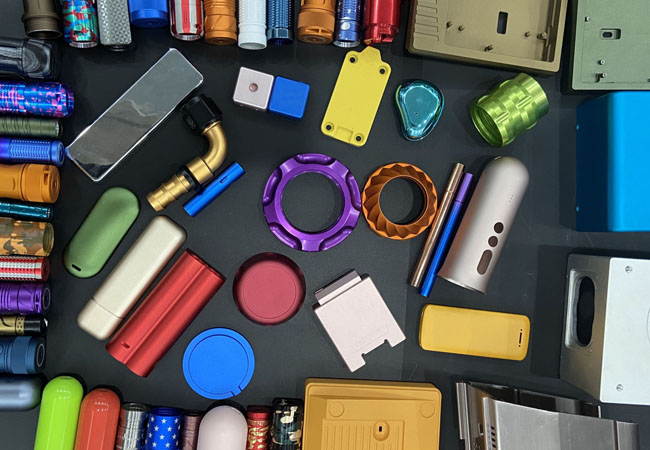
Surface Finishing Options for Metal Parts
1. Electroplating
Electroplating involves the application of a thin layer of metal onto the surface of a part through an electrochemical process. This technique is commonly used to improve corrosion resistance, wear resistance, and aesthetic appeal. Materials like gold, silver, nickel, and chrome are commonly used in electroplating.
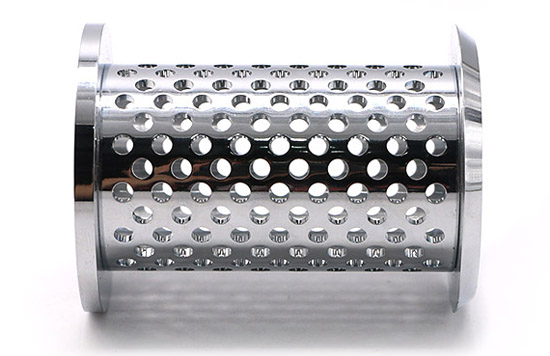
2. Chemical Plating
Chemical plating, also known as autocatalytic plating, is a process that deposits a metal coating onto a substrate without the need for an electrical current. It is ideal for creating uniform, smooth coatings on parts that may be difficult to plate using electroplating, such as complex shapes and highly detailed components. Commonly used metals include nickel, copper, and gold.
3. Anodizing
Anodizing is an electrolytic process used primarily on aluminum and its alloys to increase thickness of the oxide layer on the surface. This process not only enhances corrosion resistance but also allows for coloring of the metal, making it more aesthetically appealing. Anodized aluminum is also harder and more resistant to wear.
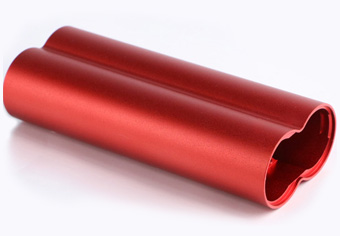
4. Chemical Treatment
Chemical treatment encompasses a range of processes, such as pickling, passivation, and phosphating, that use chemicals to improve the surface properties of metals. These treatments can help remove contaminants, improve corrosion resistance, or apply a protective layer to the metal.
5. Vacuum Plating
Vacuum plating (also known as vacuum deposition) is a method that involves depositing a thin metal film onto a surface in a vacuum chamber. This process is ideal for decorative finishes and is commonly used for parts that need a high-quality aesthetic appearance, such as electronic devices, jewelry, and cosmetic products.
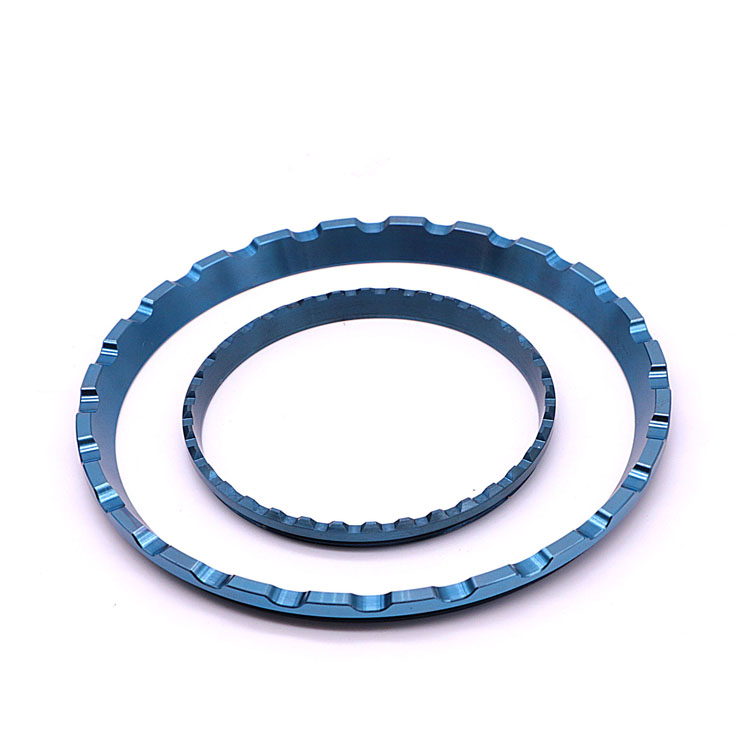
6. Hot Dip Galvanizing
Hot dip galvanizing involves immersing steel or iron components into molten zinc to form a thick, protective coating. This process offers excellent corrosion resistance for parts exposed to harsh environmental conditions, such as outdoor or industrial applications. The coating also enhances the part’s durability and resistance to wear.
7. Painting
Painting is a widely used surface finishing method that involves applying a coating of paint to metal parts to improve appearance and protect against corrosion. Depending on the type of paint used (e.g., powder coating, enamel), painting can also enhance the part’s resilience and aesthetic quality.
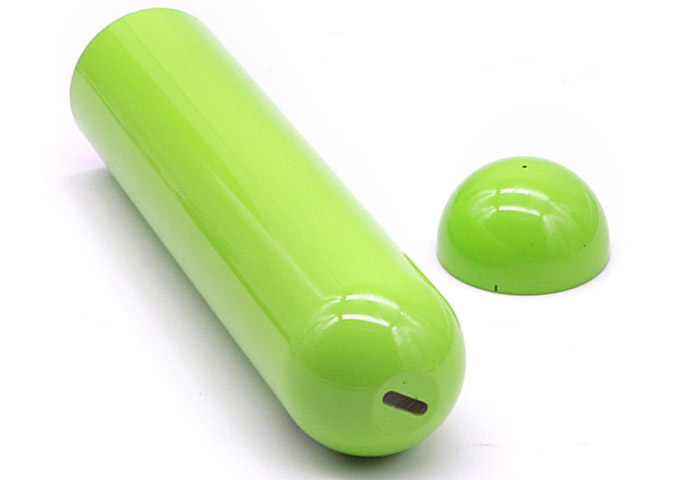
8. Thermal Spraying
Thermal spraying is a process where a material (such as metal or ceramic) is heated to a molten or semi-molten state and then sprayed onto the surface of a part to create a protective coating. This technique is particularly useful for enhancing wear resistance, corrosion protection, and thermal protection of metal parts.
Conclusion
Surface finishing plays a crucial role in ensuring that metal parts not only meet functional requirements but also perform well under challenging conditions. From corrosion resistance to improved appearance, choosing the right finishing process can significantly extend the life of metal components and improve overall performance.
Whether you're looking to enhance the durability of a metal part, optimize its appearance, or improve its performance in harsh environments, selecting the appropriate surface finishing method is essential. At VMT CNC machining factory, we offer a variety of surface finishing options that cater to the specific needs of your industry, from electroplating to thermal spraying, ensuring your parts meet the highest standards for quality and longevity.
Contact us today to learn more about how our surface finishing services can enhance the performance and aesthetics of your metal parts.
Problem: In today’s competitive market, manufacturers often face the challenge of producing metal parts that meet specific design requirements, performance standards, and industry regulations. Whether you're in aerospace, automotive, or medical manufacturing, finding a solution to meet these needs can be a difficult and costly process.
Agitation: Without the right expertise and equipment, achieving precision and quality in custom metal parts can be a daunting task. Delays, subpar materials, or poor workmanship can lead to higher production costs and compromised performance.
Solution: VMT CNC machining factory offers expert custom metal part solutions that ensure you get the high-quality, precise parts your business requires. With our advanced CNC machining services and extensive material options, we help you design and produce custom metal components that meet your exact specifications, all while reducing costs and lead times.
How VMT Assists in Customizing Metal Parts
1. Expertise in Precision CNC Machining
At VMT CNC machining factory, we leverage state-of-the-art CNC machining technology to produce metal parts with precision and accuracy. Whether you need intricate designs, tight tolerances, or complex geometries, our skilled technicians can bring your vision to life. From prototype development to full-scale production, we ensure that every part meets your design specifications perfectly.
2. Tailored Solutions for Specific Applications
Every industry has its unique demands, and VMT understands the importance of creating metal parts that are customized for specific applications. We work closely with you to understand your needs, ensuring that the parts we produce are optimized for performance, durability, and aesthetic appeal. Whether it’s for electronic housings, automotive engine components, or medical implants, we provide the right materials and processes to meet your requirements.
3. Wide Range of Materials for Custom Metal Parts
VMT CNC machining factory offers an extensive selection of metals and alloys to choose from, including aluminum, stainless steel, titanium, and more. Our wide range of materials allows us to deliver parts with the right characteristics—whether you need corrosion resistance, lightweight structures, high strength, or biocompatibility.
4. Advanced Surface Finishing Services
Once your custom metal parts are machined, we offer a variety of surface finishing options to enhance their appearance, durability, and resistance to wear and corrosion. Services like electroplating, anodizing, and painting can help you achieve the desired look and performance for your parts.
5. Rapid Prototyping for Faster Time to Market
We understand that in today’s fast-paced market, time is critical. That’s why we offer rapid prototyping services, allowing you to test and refine your custom metal parts before full-scale production. This minimizes the risk of design flaws and ensures that your final product meets the highest standards of quality and functionality.
6. End-to-End Customization Services
From initial design to final production, VMT CNC machining factory provides a comprehensive range of services to ensure that your metal parts meet your exact specifications. We assist in design optimization, material selection, machining, surface finishing, and assembly. Our team works closely with yours to ensure that every aspect of the part is optimized for performance and cost-effectiveness.
Why Choose VMT CNC machining factory for Your Custom Metal Parts
At VMT CNC machining factory, we pride ourselves on delivering high-quality, precise, and reliable metal parts. Our quality control processes ensure that each part meets your specifications and adheres to the highest industry standards.
2. Competitive Pricing
We offer cost-effective solutions without compromising on quality. Our efficient manufacturing processes, combined with our extensive experience, allow us to deliver high-quality custom parts at competitive prices.
3. Fast Turnaround Time
With our advanced CNC machining capabilities and rapid prototyping services, we offer fast turnaround times to help you meet tight deadlines and get your products to market faster.
4. Expertise in Multiple Industries
Whether you're in aerospace, automotive, medical, or industrial sectors, we have the expertise to deliver parts that meet your industry’s unique requirements.
When it comes to custom metal parts, you need a trusted partner that understands your specific needs and can deliver high-quality, reliable solutions. At VMT CNC machining factory, we are committed to providing precision machining, custom material selection, and advanced surface finishing services that ensure your metal parts meet the highest standards of performance and aesthetic appeal.
Contact VMT CNC machining factory today to discuss your custom metal part needs and discover how our tailored solutions can help you achieve the results you’re looking for.
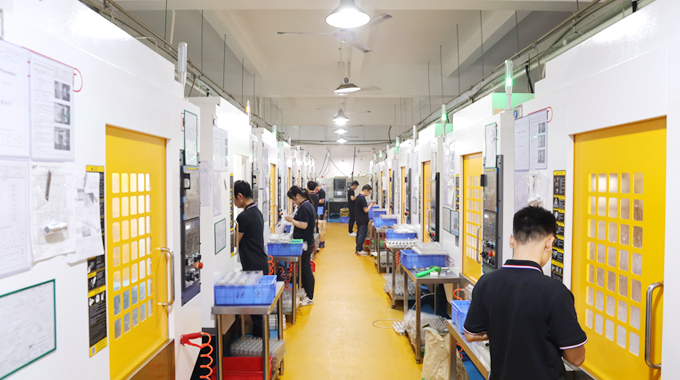
Metal parts manufacturing involves a range of processes, each suited to different applications. Whether you’re using CNC machining for precision parts, extrusion for creating uniform shapes, or forging for high-strength components, understanding these processes is crucial. Each method offers unique advantages, and choosing the right one for your project can ensure the quality and performance of your metal parts.
1. How are metal parts manufactured?
Metal parts are typically manufactured through a combination of processes such as casting, forging, machining, stamping, and metal forming. These processes involve shaping, cutting, and treating metal materials to create parts that meet specific design requirements. The selection of the manufacturing method depends on factors such as part complexity, material type, and production volume.
2. What is the process of metal manufacturing?
The process of metal manufacturing generally involves several key steps:
3. How are metal products manufactured?
Metal products are manufactured through processes like casting, forging, machining, welding, and forming. These processes use raw metal materials and shape them into usable products. Fabrication typically involves cutting, bending, and assembling metal parts to create the final product.
4. Is metal manufacturing easy to learn?
While the basic principles of metal manufacturing can be learned quickly, mastering the intricacies of processes like CNC machining, welding, and casting requires substantial hands-on experience. Advanced techniques often require an understanding of material properties, precision control, and tooling.
5. How is metal fabrication performed?
Metal fabrication involves several steps:
6. What is basic metal fabrication?
Basic metal fabrication refers to the process of transforming raw metal into finished components through cutting, bending, assembling, and finishing. It is essential for creating metal parts for industries like construction, automotive, and aerospace.
7. What are the three metal fabrication techniques?
The three main metal fabrication techniques are:
8. How are metals manufactured step by step?
Metals are manufactured through a series of steps:
9. What are the 6 most common types of metal fabrication?
The six most common types of metal fabrication include:
10. What are the 10 types of metals?
The 10 most common types of metals include:
Each metal type has distinct properties, making it suitable for various applications across industries.
11. What are the advantages of metal fabrication?
Some of the advantages of metal fabrication include:
12. Is copper stronger than iron?
While iron is generally stronger than copper in terms of tensile strength, copper has several advantageous properties that make it suitable for specific applications. Copper is more resistant to corrosion, more ductile, and has better conductivity, making it ideal for electrical and plumbing applications. On the other hand, iron (especially when alloyed into steel) is used in heavy-duty applications requiring strength and rigidity.
This FAQ section provides valuable information for those looking to understand the metal manufacturing and fabrication processes. Let me know if you'd like more detailed explanations on any of the topics or if you need this in Markdown format!
